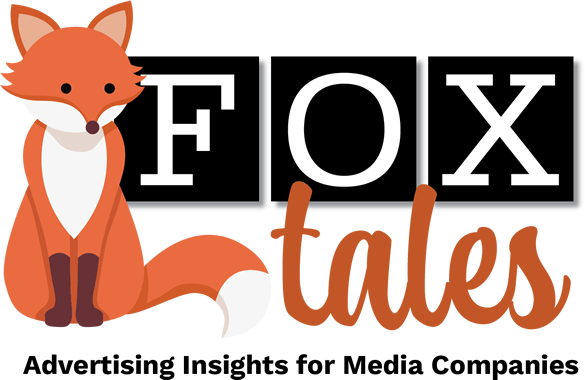Here’s a couple of thoughts for success in business and life. First, you were created for a specific purpose. And there’s a process for actualizing that. And second, think of yourself and your business as all starting with brand.
That’s the crux of the communications expert, business coach, and public speaker Skot Waldron’s message. Fox Tales enjoyed Skot’s presentation at the recent RevUP conference in Annapolis, Maryland, and immediately recognized the potential value to our extended newsletter audience of friends and family. So we decided to share Skot’s perspective with a one-on-one interview.
We all have a desire to be different, Skot believes. Indeed, when he was a kid, he changed his name from Scott to Skot. Skot’s company’s role is to help people and businesses get unstuck and give them the time to be that differentiated person (or team). And it all starts with brand. “Everything is built around your brand,” Skot says on his website. “Like an engine inside of a car. Without the engine, the car goes nowhere and lacks a soul. Your brand is your soul. That thing that gives you substance. At the end of the day, it’s what makes both customers and employees stay loyal to you.”

Skot Waldron.
Skot’s work has included clients such as J.P. Morgan Chase, the University of North Georgia, Pandora, SHRM Atlanta, IEEE, Sesame Workshop, The Home Depot, and The Coca-Cola Company.
Here’s a transcript of our Q&A.
Fox Tales: One of the videos on your website is titled “Inner Perception Drives Outer Manifestation.” It’s an intriguing concept. Tell us about business results that can be realized from using that framework.
Skot Waldron: I quote a study in my new book, “Unlocked: A 52-Week Guide For The Intentional Leader,” conducted by Lord, Ross, and Lepper on biased assimilation and attitude polarization. They found that when presented with mixed evidence on a controversial topic (in this case, the death penalty’s effectiveness as a crime deterrent), participants became more entrenched in their existing views. This study showcased how individuals assimilated evidence in a biased manner, favoring what aligned with their preconceived notions.
When it comes to business, the internal perceptions of leaders and teams can massively influence organizational outcomes. If a leader is convinced that a certain strategy is the only path to success, they’ll naturally cherry-pick information that supports this belief (aka confirmation bias). This can lead to missed opportunities or, worse, a strategic blunder if contrary evidence is ignored.
On the flip side, adopting a positive, growth-oriented mindset can lead to a culture of innovation and resilience. Teams that are encouraged to look for the good, to learn from every situation, and to remain open to diverse perspectives often find themselves more agile and adaptable. This mindset can drive better decision-making, more creative problem-solving, and a stronger alignment with evolving market dynamics.
In practical terms, if a business leader believes in the potential of his or her team and the value of their product, this perception can manifest in the form of higher team morale, better customer relations, and ultimately, stronger business results. It’s about creating a self-fulfilling prophecy where positive internal perceptions lead to external success.
So, the big takeaway? Your inner perception isn’t just some fluffy concept; it’s a powerful tool that, when harnessed correctly, can drive significant business outcomes. Think positively, stay open, and watch as those internal beliefs start shaping a more successful external reality.
Fox Tales: You develop leaders at all levels. How is that process different for a junior employee compared to a c-suite executive?
Waldron: Just as you can’t lead everyone the same, you can’t coach everyone the same either. Different players in the game need different drills or practice in their positions to make sure the team wins.
Here’s the breakdown, as I see it:
Junior Employees
- Focus: Foundation Building. You’re essentially instilling the basics of leadership—think communication skills, problem-solving, and teamwork.
- Method: Hands-On and Structured. More structured learning programs, mentorship, and rotational assignments work wonders here. They’re getting their feet wet, so practical experience coupled with guidance is key.
- Challenge: Juniors often need a boost in self-assurance. It’s about nurturing their confidence to speak up, take initiative, and lead projects.
C-Suite Executives
- Focus: Strategic Vision and Influence. At this level, it’s less about managing tasks and more about steering the ship. You’re honing these executives’ ability to craft a vision, influence stakeholders, and make decisions that impact the entire organization.
- Method: Personalized and Reflective. This is more about coaching, peer learning, and reflective practices. It’s tailored and introspective, often challenging deeply ingrained habits and mindsets.
- Challenge: The higher up you go, the harder it can be to adapt. C-suite execs must stay agile in a rapidly changing business environment, often requiring them to unlearn and relearn.
While the focus areas and methods differ, some core principles remain constant across all levels—things like integrity, accountability, and a commitment to continuous learning. Whether you’re just starting out or sitting in the boardroom, these are the non-negotiables of effective leadership.
Fox Tales: Tell us about your Attitude Training practice.
Waldron: Altitude Training is just one of the programs I use to coach and empower teams. It’s a year-long journey of becoming a leader worth following, building healthy teams, and leading those teams intentionally. Everything I do starts with a journey of self-discovery. Altitude training combines online, on-demand learning (about 15-20 minutes per week) and small group coaching sessions conducted every two weeks. It’s really built for people managers and directors.
When I work with my clients, I’m not just there to quickly inspire and inform. I leave that for when I speak to audiences at a conference or corporate event. In the coaching realm, I’m in it for the long haul. I expect you to show up, do the work, and remain consistent.
We all want transformation, but that doesn’t come without consistent information and application.
Fox Tales: How should media organizations deal with change? (Which is a constant, and can be highly disruptive.)
Waldron: Dealing with change, especially in the fast-paced media landscape, requires media organizations to be agile, forward-thinking, and adaptable. Here are some thoughts I had. Hopefully, they help.
- Change isn’t a bad word. My argument is everyone likes change or we’d still be using pay phones and carts and buggies for transportation. Change is a constant. It’s not good or bad. Change just is. The way we think about change drives how we feel about change and makes it “good” or “bad” to us personally. Understanding how different people respond to change is crucial for getting buy-in.
- Embrace a culture of flexibility and innovation. Encourage a company culture that’s open to new ideas and adaptable to change. This can mean being open to shifts in consumer behavior, technological advancements, or changes in content-delivery methods.
- Invest in continuous learning. The media industry evolves rapidly, so ongoing education and training are essential. This can involve keeping up with the latest digital tools, storytelling techniques, and understanding emerging platforms.
- Strengthen digital presence. With the digital shift in media consumption, organizations must have a robust strategy. This includes leveraging social media, optimizing for mobile, and exploring new formats like podcasts or interactive content.
- Engage in predictive planning. Use data analytics to anticipate trends and potential disruptions. This foresight allows media organizations to pivot quickly and stay ahead of the curve.
- Manage change proactively. Implement change-management strategies to handle transitions smoothly. This includes clear communication, training, and support for employees during periods of change.
- Leadership involvement. Leaders should be actively involved in the change process, setting clear visions and being transparent about the change’s impact.
- Build resilience. Cultivate an organizational resilience to withstand market fluctuations and unexpected challenges. This means being financially prudent, having contingency plans, and maintaining a strong brand reputation.
- Change isn’t just a challenge—it’s also an opportunity. Being proactive, staying informed, and maintaining flexibility are key to not just surviving but thriving.
Fox Tales: Tell us the importance of frontline sales professionals like Fox Associates in driving enterprise success and communicating brand values.
Waldron: Frontline sales pros are the face. They are the brand of the company when people have nothing else to go on. Yes, the company itself has a brand, but the individual that represents it will have a bigger impact on the perception of that company in the initial stages than the actual company will. Their behavior, attitude, and knowledge reflect directly on the brand, making them key ambassadors.
Being on the frontline, they gather invaluable insights and feedback from customers. This information is crucial for the company to adapt its strategies, products, or services to better meet market demands. They have to be able to listen and understand what is needed. Not just talk and try to sell.
I believe one of their key roles is education. Educating is serving. Continue to serve your customers and they don’t want to leave. In an era where products and services are increasingly complex, educating and informing customers is key to helping customers make informed decisions.
They are not just selling a product or service, they are the vital link between the company and its customers, playing a key role in revenue generation, market expansion, customer relationship management, and brand representation.
